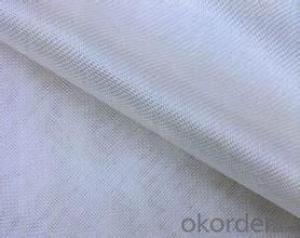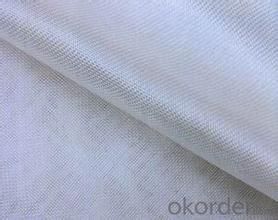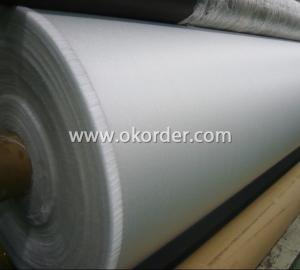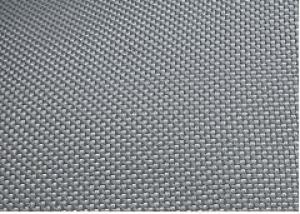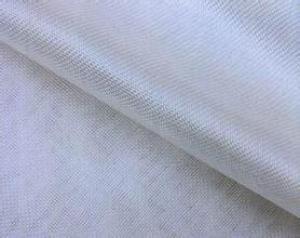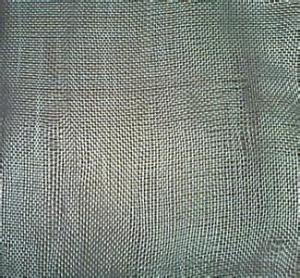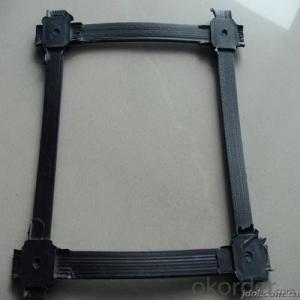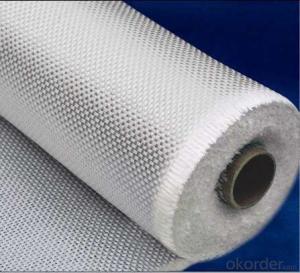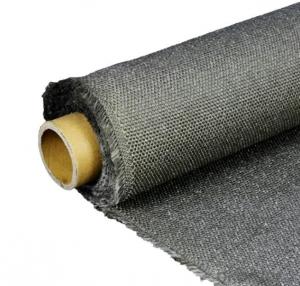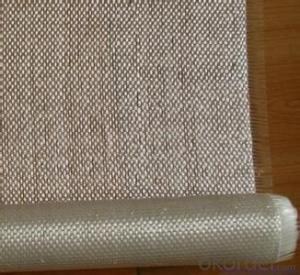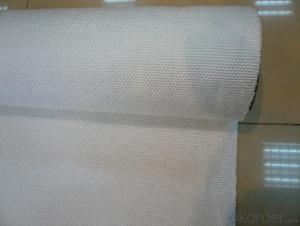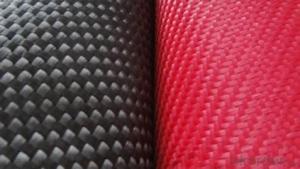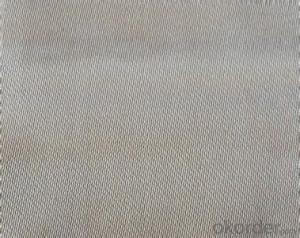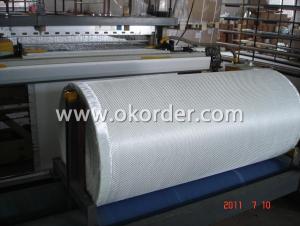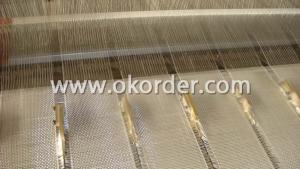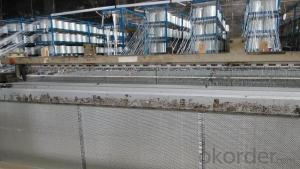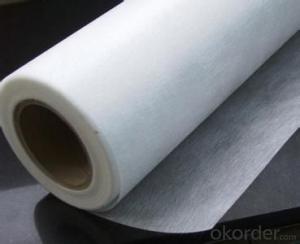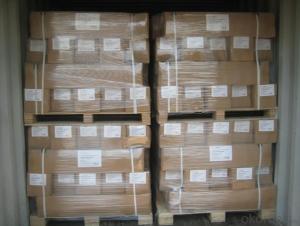High Quality China High Silica Fiberglass Fabric Roll
- Loading Port:
- China Main Port
- Payment Terms:
- TT OR LC
- Min Order Qty:
- -
- Supply Capability:
- -
OKorder Service Pledge
Quality Product, Order Online Tracking, Timely Delivery
OKorder Financial Service
Credit Rating, Credit Services, Credit Purchasing
You Might Also Like
Quick Details
| Place of Origin: | Brand Name: | Model Number: | |||
| Application: | Weight: | Surface Treatment: | |||
| Width: | Weave Type: | Yarn Type: | |||
| Alkali Content: | Standing Temperature: | product: | |||
| Colour: | Length count: | Thread count: | |||
| Endurance of temperature: | Instantaneous temperature: |
Packaging & Delivery
| Packaging Detail: | carton |
| Delivery Detail: | 15days |
Specifications
high silica fiber cloth
1.SiO2=96%
2.Work temperature 1100
3.Thermal insulationg
4.Heat protectio
high silica fiber cloth
1.SiO2=96%
2.Work temperature 1100
3.Thermal insulationg
4.Heat protection
- Q: Is fiberglass fabric suitable for use in medical dressings?
- Yes, fiberglass fabric is suitable for use in medical dressings. It is highly versatile, lightweight, and has excellent strength and durability. Additionally, fiberglass fabric is resistant to moisture, chemicals, and bacteria, making it ideal for wound care and protection. It can provide effective support, immobilization, and compression, promoting faster healing and preventing infection.
- Q: Can fiberglass fabric be used for architectural applications?
- Certainly, architectural applications can make use of fiberglass fabric. This adaptable material presents several advantages for architectural projects. Its lightweight nature, flexibility, and exceptional tensile strength make it ideal for a range of applications, including roofing, cladding, and insulation. Moreover, fiberglass fabric's durability and longevity are enhanced by its resistance to fire, chemicals, and UV rays. Its ability to be effortlessly molded into intricate shapes further allows architects to conceive distinctive designs and structures. In conclusion, the manifold benefits and versatility of fiberglass fabric establish it as a favored option for architectural applications.
- Q: How is fiberglass fabric cleaned?
- Fiberglass fabric can be cleaned by first removing any loose debris or dirt with a soft brush or vacuum cleaner. Then, mix a mild detergent with warm water and gently scrub the fabric using a sponge or soft cloth. Rinse thoroughly with clean water and allow it to air dry. Avoid using harsh chemicals or abrasive materials that may damage the fiberglass fabric.
- Q: How does fiberglass fabric perform in thermal conductivity?
- Fiberglass fabric is known for its low thermal conductivity, meaning it is a poor conductor of heat. This property allows it to provide excellent insulation and heat resistance, making it suitable for various applications where thermal protection is required.
- Q: How is fiberglass fabric used in the automotive industry?
- Due to its unique properties, fiberglass fabric finds extensive use in the automotive industry for a variety of purposes. One of the primary applications of fiberglass fabric in this sector involves the production of car parts such as body panels, hoods, and spoilers. The choice of fiberglass fabric for these purposes is driven by its lightweight, strong, and durable nature. This material boasts an impressive strength-to-weight ratio, enabling it to provide robustness to car parts without adding unnecessary weight. This aspect is crucial in enhancing fuel efficiency and overall vehicle performance. Furthermore, fiberglass fabric is also employed in the automotive industry for insulation purposes. It is commonly utilized to insulate engine components, including exhaust systems and heat shields, safeguarding surrounding parts against excessive heat. The remarkable temperature resistance of fiberglass fabric renders it an ideal option for these applications. Moreover, fiberglass fabric contributes significantly to the manufacturing of automotive interiors. It is frequently utilized in upholstery, door panels, headliners, and trunk liners. The fabric's exceptional flexibility allows it to conform effortlessly to various shapes and contours of the car interior. Additionally, it exhibits resistance to stains, chemicals, and fading, ensuring a long-lasting and visually appealing interior finish. Additionally, fiberglass fabric serves as a reinforcement material in the automotive industry. It is often incorporated as a layer in the production of composite materials used for manufacturing car parts. By combining fiberglass fabric with resins or other materials, manufacturers can create robust and rigid components capable of withstanding impacts, vibrations, and other external forces. Overall, fiberglass fabric plays a crucial role in the automotive industry, offering lightweight, durable, and heat-resistant solutions for diverse applications. Its versatility and exceptional properties make it an ideal material for manufacturing car parts, insulation, interiors, and reinforcement, thereby contributing to the efficiency, safety, and overall quality of vehicles.
- Q: The function of roof glass fiber non-woven fabric isolating layer
- Glass fiber isolation layer non-woven fabrics: waterproof, breathable, steam film, reflective insulation,
- Q: How does fiberglass fabric handle chemicals and solvents?
- Fiberglass fabric boasts outstanding resistance to a broad spectrum of chemicals and solvents. Given its non-reactive nature and remarkable chemical resistance, fiberglass is an ideal material for industries that handle corrosive substances. The composition of fiberglass fabric, comprising woven glass fibers, provides exceptional defense against chemical attacks. It exhibits high resistance to acids, bases, and organic solvents, rendering it suitable for applications in chemical processing plants, laboratories, and oil refineries, where exposure to corrosive chemicals is common. One of the key advantages of fiberglass fabric lies in its ability to maintain physical integrity and mechanical strength even when exposed to various chemicals and solvents. In contrast to other materials that may degrade or become brittle upon contact with certain substances, fiberglass fabric remains stable and durable. This ensures its ability to withstand harsh conditions and perform effectively over extended periods. Another benefit of fiberglass fabric lies in its low permeability to chemicals and solvents. As a result, it acts as a barrier, preventing the passage of harmful substances through its surface. This property proves particularly valuable in applications where containment is crucial, such as storage tanks, pipelines, and chemical-resistant linings. In addition to its chemical resistance, fiberglass fabric also offers other desirable properties. It is lightweight, flexible, and exhibits excellent thermal insulation. These characteristics make it a versatile material applicable in a wide range of situations that require both chemical resistance and structural integrity. However, it is worth noting that while fiberglass fabric is highly resistant to most chemicals and solvents, there are exceptions. Certain potent acids, like hydrofluoric acid, can attack fiberglass and cause degradation. Additionally, prolonged exposure to solvents such as acetone or chloroform may lead to fabric swelling or softening. All in all, fiberglass fabric proves to be a reliable and durable material capable of withstanding a wide range of chemicals and solvents. Its excellent chemical resistance, coupled with its other advantageous properties, render it a preferred choice in industries where protection against corrosive substances is paramount.
- Q: Can fiberglass fabric be used for making protective sleeves?
- Indeed, protective sleeves can be crafted using fiberglass fabric. Renowned for its durability, heat resistance, and capacity to endure soaring temperatures, fiberglass fabric proves to be an exceptional option for such sleeves, particularly in industries where laborers confront intense heat or perilous substances. By furnishing a dependable shield against heat, flames, chemicals, and abrasions, fiberglass fabric effectively safeguards the wearer's arms from potential harm. Moreover, its lightweight and flexible nature ensure the wearer's comfort and facilitate effortless mobility.
- Q: What color steel plate is good for dust-free workshop?
- EPS polystyrene foam sandwich panel is composed of a color plate surface, closed self extinguishing type polystyrene foam plastic as the core material, the color pressure plate by automatic continuous molding machine with high strength after adhesive bonding and into an efficient new composite materials. Mainly used in public buildings, industrial buildings roofing, walls and electronics, medicine, food and clean workshop and the combination of cold storage, building add layer, Shangting etc. The utility model has the advantages of light weight, convenient installation, heat preservation, heat insulation, waterproof, etc., and has the characteristics of fast construction, long service life, beautiful appearance, high mechanical strength of steel materials, easy molding performance, etc..
- Q: Can fiberglass fabric be used for reinforcement in boat decks?
- Yes, fiberglass fabric can be used for reinforcement in boat decks. It is known for its strength, durability, and resistance to water and chemicals, making it an ideal material for reinforcing boat decks. It provides added structural integrity and enhances the overall strength of the deck, making it more reliable and long-lasting.
Send your message to us
High Quality China High Silica Fiberglass Fabric Roll
- Loading Port:
- China Main Port
- Payment Terms:
- TT OR LC
- Min Order Qty:
- -
- Supply Capability:
- -
OKorder Service Pledge
Quality Product, Order Online Tracking, Timely Delivery
OKorder Financial Service
Credit Rating, Credit Services, Credit Purchasing
Similar products
Hot products
Hot Searches
Related keywords
